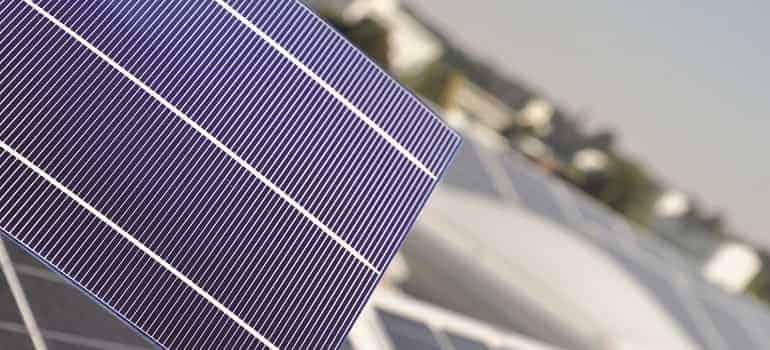 Hanwha Q CELLS Japan has announced that it secured a leading module supply market share with 770 MW of module shipments in Japan in 2017.
Hanwha Q CELLS Japan has announced that it secured a leading module supply market share with 770 MW of module shipments in Japan in 2017.
According to independent report, Reality and Future Perspective of Solar Battery Related Technology and Market 2018, published by Japanese market research company Fuji Keizai Co., Ltd, Hanwha Q CELLS Japan’s module shipments in Japan last year was higher than any other company, including Chinese players as well as leading domestic brands.
Last year’s market-leading performance built upon a strong showing for Hanwha Q CELLS Japan in 2016, when the company was the second largest module supplier with 700 MW of shipments.
Hanwha Q CELLS Japan first entered the Japanese solar market in 2011. In the following year, the Company delivered a relatively modest 50 MW of modules, before rising to become the leading overseas player in 2013 with shipments of 500 MW.
Japanese appetite for high quality matches the ethos of Hanwha Q CELLS Japan
Non-domestic solar module suppliers have long struggled to gain secure footing in the Japanese PV market. A combination of strong domestic brands and a historical preference for high quality products has meant that Japanese end consumers, distributors and installers have rarely chosen a non-Japanese solar module.
This preference for high performance and high quality is evident in multiple markets in Asia-Pacific, including Australia, which has consistently seen growth in market share that reached nearly 10% in the residential, rooftop segment as of 2017.
That attitude has begun to change over the past couple of years as leading international firms such as Hanwha Q CELLS Japan have entered the market. The product portfolio offered to Japanese customers by Hanwha Q CELLS Japan is defined by the highest technology standards of “Engineered in Germany” with Q CELLS’ proprietary technology “Q.ANTUM”. Moreover, Q CELLS’ quality test is two to three times stricter than the global testing standard, so the Company is able to meet the exacting standards and preferences required in Japan.
Awards and accolades bestowed upon Q CELLS’ modules – including the recent Intersolar Award 2018 in the category of Photovoltaics for the Q.PEAK DUO-G5 half-cell module, and the “Top Brand PV Europe Seal 2018” award from EuPD research – serve to underline the excellence in reliability, performance, quality and innovation that Japanese customers appreciate.
Hanwha Q CELLS Japan also provides localized products and solutions that have been adapted to meet the needs of the typical Japanese household, such as smaller 32- and 48-cell modules that are better suited to Japanese residential rooftops. Also, the Q.HOME+ all-in-one storage solution, which is comprised of a battery, inverter and energy management system is available in Japan.
Furthermore, Hanwha Q CELLS Japan operates one of the largest sales networks in Japan among non-domestic PV manufacturers, with a Tokyo HQ and four additional sales branches in Fukuoka, Osaka, Nagoya and Sendai. The technical support center is also located in Tsukuba. Such a broad presence provide Japanese customers a peace of mind that Hanwha Q CELLS Japan is on hand to support them and their PV systems at their convenience.
Residential growth equals residential strength for Hanwha Q CELLS Japan
Despite severe cuts to Japan’s residential feed-in tariff (FIT) – which was lowered at the beginning of the year from ¥28/kWh to ¥26kWh – the residential PV sector is enjoying a renaissance, boosted by the Government’s Zero Energy House (ZEH) directive. The ZEH states that more than half of new homes built by 2020 should have zero emissions, and thus more and more homebuilders and homeowners are turning to solar. According to consulting firm RTS Corporation, residential installations will play a leading role in pushing 2018 PV installations in Japan to as high as 7.5 GW – up from 2017.
In the residential market last year, Hanwha Q CELLS Japan’s Q.PEAK product was the most preferred module in Japan, winning the ‘Smart HIT Award 2017′ prize given by Smart House Magazine. The Q.PEAK series uses Hanwha Q CELLS’ proprietary Q.ANTUM (PERC) monocrystalline cell technology to deliver efficiencies of up to 18.6%, offering outstanding yields over smaller surface areas.
Hanwha Q CELLS, together with Hanwha Q CELLS Korea, another affiliate of Hanwha Group, is the world’s largest manufacturer of PERC solar cells, with annual production capacity of over 6 GW. PERC technology was first developed at Australia’s University of New South Wales. Inventor of PERC and recent Global Energy Prize winner, Dr. Martin Greenpredicts that PERC technology utilized in all Q.ANTUM module ranges of Hanwha Q CELLS, including half-cell PERC technology such as Q.ANTUM DUO, will be the direction in which the rest of the industry will go. “Hanwha Q CELLS has definitely led the way in getting PERC into production,” says Dr. Green.
Dong-in Shin, the Head of Sales for Hanwha Q CELLS Japan, said, “Securing leading market share in a competitive, high quality solar market such as Japan is testament to the extensive effort put in by the Hanwha Q CELLS R&D team to ensure that our module products are continually the best-in-class.”
“As a non-domestic company, thriving in the Japanese solar market is incredibly challenging, which is why Hanwha Q CELLS Japan has taken great care to understand the needs of end customers in Japan, examining closely which solutions, products and services would best fit their needs, and why we have duly delivered. Our aim now is to continue to strengthen this market-leading position in Japan and further build strong relationships throughout the country.”

